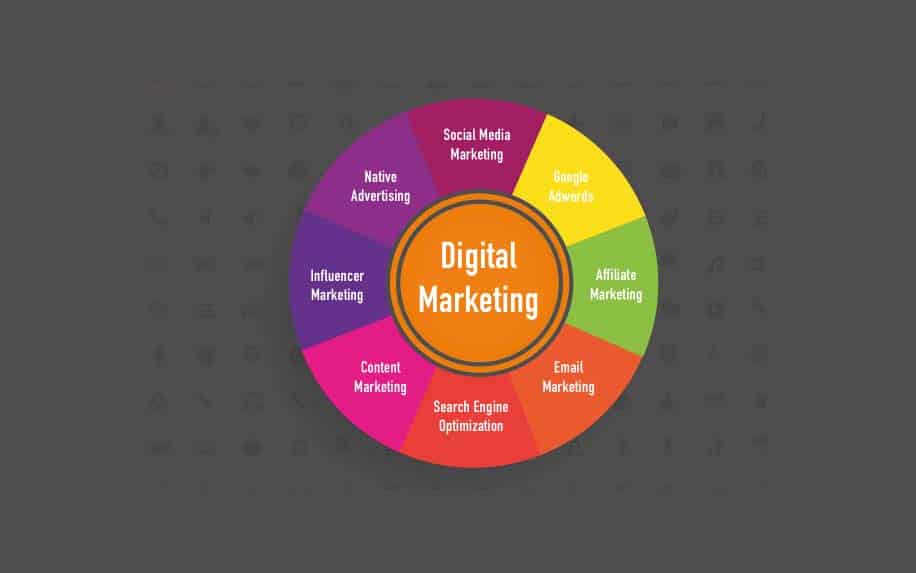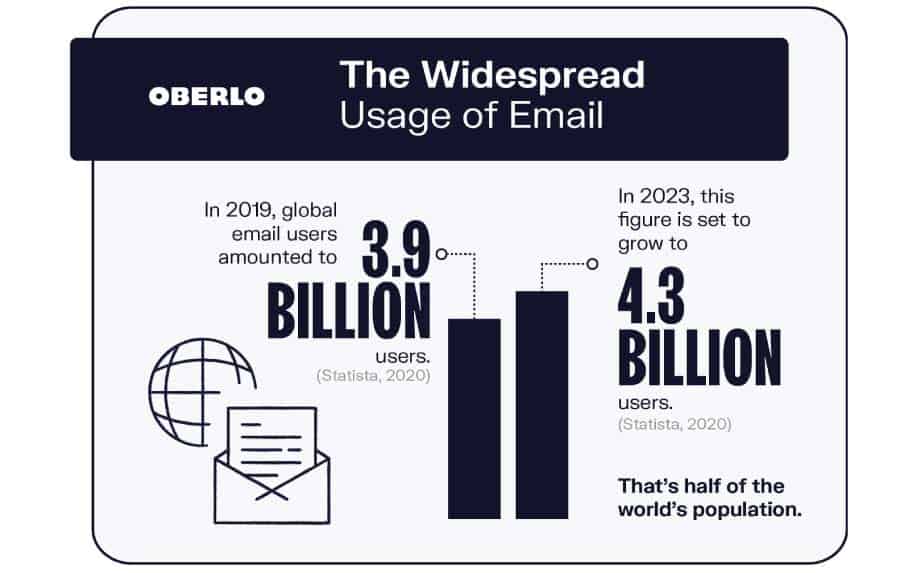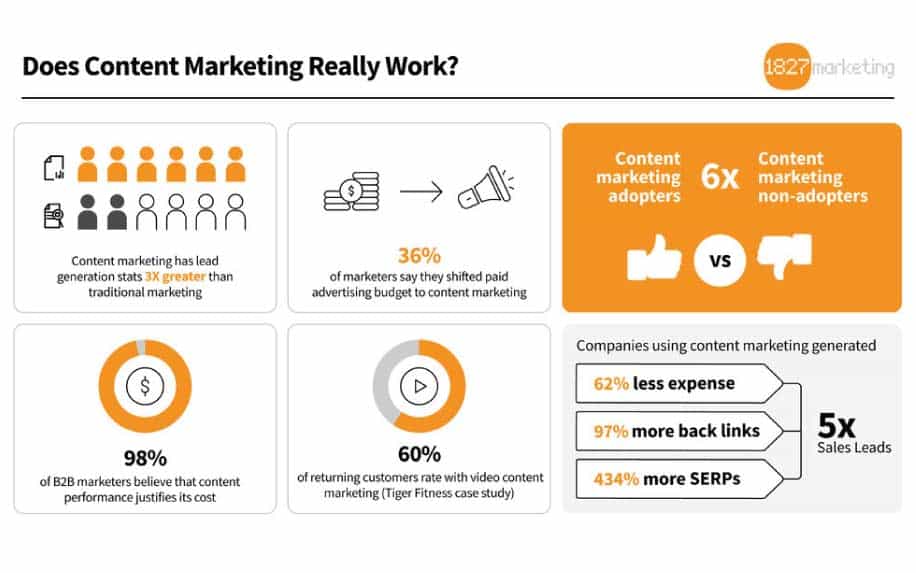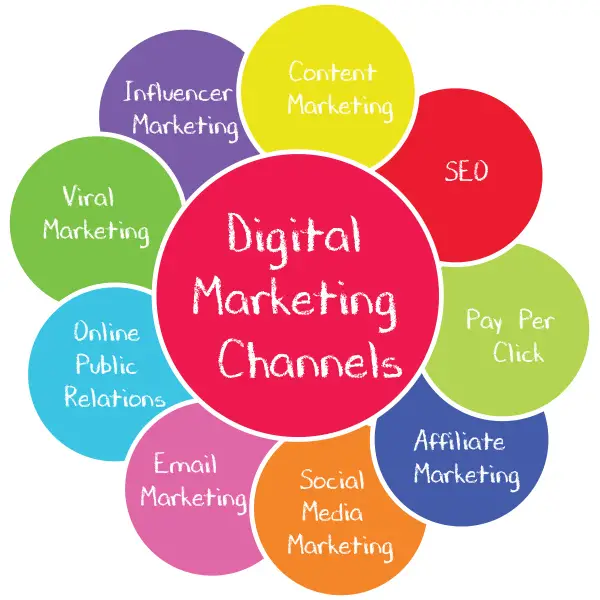
Digital marketing channels provide critical touchpoints for engaging today’s consumers wherever they spend time online. In this comprehensive guide, we will examine the major digital marketing channels, their unique value propositions, and effective strategies for success.
If you run any business, you must understand the different digital marketing channels. Whether you’re focusing on social media, content marketing or display advertisement, technology has rewritten the way people buy, sell, and review products.
It’s important to keep a wide “scope” when considering digital marketing techniques. If you focus on one avenue—and one avenue only—you won’t hit a big audience. That said, it’s wise to diversify your talent across every channel to link solutions together.
The internet has completely changed the business landscape. These days, it’s easy for small businesses to go toe to toe with major international brands. All you need is a little know-how.
It’s also crucial to choose appropriate digital marketing channels for your specific goals and business model.
Today, we will discuss the different digital marketing channels you have at your disposal. First, though, let’s start with the basics.
What are Digital Marketing Channels?
A digital marketing channel is an online tool or platform which you use to reach new customers. Essentially, this is anywhere that people spend their time online. The trick is to understand what users respond to on each of these channels.
On top of that, different digital marketing channels are appropriate for different business models and contexts.
For example, if you’re a business-to-business brand which deals with a small number of high-value clients, you’ll need to put in a lot more legwork than a consumer brand which is based on shifting a large volume of low-value goods.
This means using different marketing channels.
With that in mind, here are our nine essential digital marketing channels, which every business should be familiar with.

1. Display Advertising
Display advertising is probably one of the “purest” channels of digital marketing you’ll encounter. Publishers have spent years tailoring experiences to the buyer, and they’ve come up with quite a few brand solutions.
Purchases ad space on websites, apps and networks to reach users as they browse content, leveraging targeting and remarketing.
A display can be a webpage advertisement, a YouTube video banner or several other visual platforms. To create a successful display advertising initiative, you’ll need to learn how to engage viewers.
Essentially, this means creating ads on different platforms and paying for these to be placed in front of users.
Today, smartphones offer the best display of advertisement support. Why? Because they’re portable. Today, most consumers use their smartphones to browse, review, buy and trade products.
Mobile banner advertisements, app advertisements and even SMS multimedia are being used in the new world of display advertising. If you want to engage users, hook up a mobile strategy. Just ensure you’ve outfitted your brand’s website for a small-screen display.
The goal is for your ad spend to be as small a proportion of your profit margin as possible.
2. Email Marketing
Next up is email marketing. No, it isn’t outdated, despite what anyone says. Email is one of the digital marketing channels with the best return on investment across most industries.
59 % of B2B marketers consider email to be one of the most effective channels around for revenue gain.
It’s a powerful tool, and it’s an invaluable digital marketing channel.
A solid email marketing campaign delivers information, first and foremost. Unlike SMS and social media marketing, email marketing can offer long-form information alongside extended deals. It can also be strategized to prioritize specific customer groups.
Other marketing avenues, like social media, are sometimes too granular.
Some channels have audience-size thresholds marketers struggle to target buyers in. Because email lists can be derived from eCommerce purchases, Facebook likes, and brick-and-mortar amenities, they’re highly adaptable.
The challenge with email marketing is getting people to join your mailing list in the first place. The key here is to use what’s known as a lead magnet. This is anything which you can give away in exchange for signups.

3. Search Engine Optimisation
It encompasses search engine optimization to boost organic rankings and paid search ads to purchase visibility and traffic when users search for keywords relevant to your business.
Search engine optimization, or SEO, is one of the top digital marketing channels available today. SEO has changed dramatically in recent years, and it’s responsible for brand attention, customer targeting, product promotion and a variety of marketing tactics.
Essentially, SEO is all about creating a website which Google thinks provides valuable information to users. This comprises everything from the content you write to how your site performs.
Modern SEO tactics utilize data gathered from organic traffic. A lot of SEO case studies have been performed, too, which are being used by companies seeking the best possible SEO strategies.
If your company wants organic traffic, a good Google search position and an optimal user experience, it’ll hook up a solid SEO strategy to its digital marketing channels.
Search engine keywords are the glue which binds social media content, website content, email marketing material and mobile access throughout your online marketing campaigns. Your business can’t survive the digital marketing world without it.
4. Pay-Per-Click Advertising
Because the competition for online visibility is fierce, SEO may not be enough.
Many digital marketers use pay-per-click advertising, or PPC, as another marketing channel. When used alongside a strong SEO technique, pay-per-click advertising can secure online real estate, maximize page clicks and—most importantly—record your brand’s best buyers.
If you’re on the fence about PPC, you should check it out. Too often, PPC is left by the wayside. It isn’t an “accessory digital marketing channel” by any means.
It’s incredibly effective when used successfully, and experts believe it’s one of the best tools for small and medium-sized businesses.
To connect a PPC marketing channel, you should consider establishing a solid SEO foundation first. These strategies have great synergy, and they offer long-lasting benefits to marketers seeking continual analytics to power other advertisement initiatives.
The key here is to use SEO to gain your initial traffic to have a baseline for conversion rate optimization. Once you’re confident that your site is a converting machine, you can use PPC to scale your traffic.
Then, you can sit down and watch the money pouring in.
5. Content Marketing
Involves creating and promoting valuable, relevant and engaging content, including blogs, videos, infographics, ebooks, and more, to attract and convert target audiences.
Content marketing has become a fundamental cornerstone of online marketing. It’s rare to see a digital marketing campaign which doesn’t have a content marketing channel. A solid content marketing channel will give users valuable links throughout your site.
Content marketing encapsulates a good SEO strategy. It also assists PPC efforts. To succeed in the digital world, you must prioritize organic search traffic. In the SEO world, links matter.
You’ll need to centre your campaign around SEO—then keep your content strategy on its a-game. Because the business world’s understanding of content marketing has grown, many providers have published their content.
By doing so, they’ve established ongoing relationships with their buyers.
Third-party content agencies can assist with a content marketing strategy. Many businesses rely on outsourced content to ensure quality, timeliness and SEO compatibility. Fortunately, content marketing is highly effective on social media platforms.
Businesses often link external blogs, articles and product-related content anchored by Facebook posts, Instagram pictures and Twitter news.

6. Social Media Marketing
It focuses on organic and paid engagement on social platforms like Facebook, Instagram, Twitter, LinkedIn, YouTube and Pinterest, where billions of users have conversations and discover new brands.
Speaking of Facebook, Instagram and Twitter, social media marketing is the “rock star” online marketing channel. Your brand’s social media marketing channel will promote its goodwill, fight your competition and bring your products to the consumer’s level.
Today, the majority of brands have a social media presence. The Internet is useful, but it’s also susceptible to rumours, lies and false advertisements.
Social media marketing, when effective, is a PR resource. It brings popularity to a brand, enhances its social image and offers incredibly relevant content. If you can engage users with interesting posts, share media regularly and persist with communication, you’ll benefit.
By using a Facebook brand page, Twitter updates and Instagram content, you can ensure repeat exposure. You can also get a feel for what products and services consumers are buying into.
This is also a crucial digital marketing channel for building customer relationships. Social media allows users to communicate with brands directly, sharing good experiences and getting positive outcomes from bad ones.
7. Affiliate Marketing
Today’s big-boomer brands are using affiliate marketers to create massive followings. It’s one of the lesser-used online marketing channels, but it can rake in serious amounts of brand support.
Partners with relevant websites and influencers who promote products and earn a commission for leads and sales generated.
By establishing an affiliate marketing arrangement, you can power your brand’s future. Entrepreneurs, in particular, thrive upon strong affiliate marketing partnerships.
Affiliate marketers promote a business’s products and services through testimonials, links, banners and online content. Often, businesses pay affiliate marketers based on transactions resulting from their efforts.
Essentially, this means paying independent marketers to find new customers for you in exchange for a commission.
Many affiliate marketing arrangements can win new customers, boost company revenue and ensure a product’s effectiveness. Because it’s an agreement, an affiliate marketing arrangement has flexible forms of compensation.

8. Viral Marketing
Creativity and entertainment. These are the two keywords for any post or video that goes viral. This is the quickest digital marketing channel that will get your followers in a blink. However, do not mistake it for easy, it is far from easy.
An idea has to be exceptionally unique to stand out and go viral. If you have awe-inspiring ideas, viral marketing is the right channel for you.
While many companies are familiar with viral marketing, few appreciate how it works. In reality, this digital marketing channel is a little bit dated and can’t be relied on in and of itself.
Instead, you should use the core idea behind shareable, viral content to inform your decision-making on other digital marketing channels.
9. Online Public Relations
On the quieter side of online marketing channels, online public relations promote your brand image. Today’s culture is a media-saturated one, and effective PR strategies are vital to the welfare of business health.
Builds brand visibility and authority by securing high-domain backlinks, guest posting opportunities, and editorial coverage on news sites.
The ultimate goal of PR is to secure trust.
In the world of business, digital PR can be a science. It isn’t restricted to social media, either. Email feedback, real-time SMS polls, online website outreach and even phone contact are important.
Powerful brands are role models, and a PR strategy can make or break a brand’s influence. As with any digital marketing channel, PR links different strategies together. Make no mistake, however, because it’s a powerful resource.
To secure your digital presence, you should work from the ground up. Study your buyers and record their most-used keywords. Target customers who are expected to promote your brand the most.
Then, use display advertising, SEO keywords and a strong PPC campaign to gather more fans. Finally, branch out into public relations with a sound social media marketing strategy, intuitive affiliates and an interesting content marketing plan. You’ll be glad you did.
Comparing Digital Marketing Channels
| Channel | Best For | Metrics | Pros | Cons |
|---|---|---|---|---|
| Search Engine Marketing | Targeted conversions | ROI, CTR, Low CPA | Reaches informed users with buying intent | Slow organic rankings optimization |
| Social Media Marketing | Branding and awareness | Engagement, Reach | Massive scale and audience size | Weak conversion rates |
| Content Marketing | Organic growth and SEO | Traffic, Backlinks, Leads | Builds credibility and trust | Requires substantial time and resource investment |
| Email Marketing | Lead nurturing and retention | Open Rate, CTR | Personalization, automation | Potential for emails to be marked as spam or unsubscribe |
| Display Advertising | Broad reach and retargeting | Impressions, CPM | Visual impact and remarketing | Interactive ability to track engagement |
| Affiliate Marketing | Cost-efficient sales | Conversion Rate, Revenue | Only pay partners for actual performance | Loss of control over brand messaging |
| Webinars/Webcasts | Lead generation and education | Registrations, Attendance | Leverage the credibility of mentions on high-authority sites | High production effort required |
| Online PR | Amplify brand visibility | Domain Authority, Backlinks, Referral Traffic | Leverage credibility of mentions on high-authority sites | Cannot guarantee media coverage |
Key Digital Marketing Channel Best Practices
- Leverage channel strengths – Align channel choice with campaign goals and strengths.
- Integrate cross-channel – Develop cohesion across channels for unified messaging.
- Measure performance – Set proper metrics and track progress in analytics.
- Mobile optimization – Ensure assets and pages render smoothly on mobile.
- Personalize experiences – Tailor content and messaging to user interests.
- Retarget engaged users – Remarket to those who have interacted with the brand.
- Prioritize video and visuals – Leverage rich media for higher engagement.
- Automate when possible – Use tools to scale one-to-one communication.
- Constantly test and optimize – Experiment across channels to improve results.
- Provide value first – Focus on educating and entertaining vs pure promotion.

FAQ on Digital Marketing Channels
What are the top 3 most effective digital marketing channels? The most effective channels for most businesses are search engine optimization, pay-per-click advertising, and email marketing. Social media and content marketing also deliver strong results.
How do you track performance for each channel? Web analytics tools like Google Analytics allow you to set up conversion tracking, channel attribution, and goals for each channel to measure performance. KPIs vary by channel.
What skills are required to succeed with each channel? Search and social media require strong copywriting; email and content marketing require strong creative direction and UX; PPC and analytics require strong analytical skills.
What is the average budget for each channel? Search, social, and display advertising may require a minimum budget of $1,000+/month to see results. Content marketing and organic social media have minimal hard costs.
Which channels are best for top-of-funnel vs bottom-funnel goals? Social media, content marketing, and online PR drive upper-funnel brand building. PPC, email, and affiliate marketing convert users further down the funnel.
How can companies maximize ROI across digital channels? By determining the conversion value of each channel, setting proper tracking, and doubling down on the highest-performing channels while optimizing or eliminating lower performers.
Should businesses manage channels in-house or outsource them? Many companies succeed by outsourcing channel expertise (SEO, PPC, email marketing) but handling holistic strategy and coordination in-house.
What are the newest emerging digital marketing channels? Video marketing across platforms and connected TV, chatbots for messaging apps, native advertising, and leveraging newer platforms like TikTok.
How important is audience research and segmentation for channel success? This is extremely important, as users engage differently on each platform. Targeting specific segments with tailored messaging drives better results.
How often should you optimize and iterate on digital campaigns? Continuously. Using testing and analytics data, campaigns should be optimized continuously to improve engagement and conversion.
Conclusion
Today’s digital landscape provides endless touchpoints for connecting with audiences. However, matching each channel to specific campaign goals based on strengths enables brands to break through noise and drive measurable results. Tracking performance and iterating quickly is key to continuous optimization. As new channels and platforms emerge, brands must remain agile and centred on providing value.
If you need help utilising any of the above digital marketing channels, contact ProfileTree today.
The post The Complete Guide to Today’s 9 Top Digital Marketing Channels for Business Growth appeared first on ProfileTree.

Leave a Reply